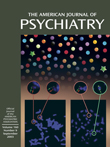Psychiatric Illness in Women: Emerging Treatments and Research
This book is an evidence-based, contemporary text of research summaries on topics specific to women’s issues in psychiatry. Appropriate for a more advanced reader, the text assumes a high level of previous knowledge. This would not be the first text for which an on-call resident would reach when consulted by the obstetrics-gynecology service in the middle of the night.
Divided into sections based on categories of mental illness, the book begins with a comprehensive review of the differences in the gender epidemiology of the different anxiety disorders, with discussion of the causes for the high rate of anxiety disorders among women. The next chapter more specifically discusses panic disorder with agoraphobia, presenting psychosocial and biological issues in causes and treatments relevant to women. Completing this section is a discussion of why women are more susceptible to posttraumatic stress disorder, with a thorough explanation of sex differences in the hypothalamic-pituitary axis.
The most clinically informative section of the book as a whole, Major Depressive Disorder and Related Disorders, begins with the general topic of depression in women in the context of the female life cycle. The chapter “Sex and Psychopharmacology of Antidepressants” addresses such issues as the influence of the menstrual cycle and sex on both the symptoms and response to medications of depression. This chapter also introduces an unfortunately common theme, namely, the lack of pharmaceutical research in women. The following chapter, which discusses postpartum mood disorders, addresses this important, contemporary, yet underresearched issue with descriptions of the related postpartum illnesses and includes a concise yet comprehensive chart of the research. Finally, in the discussion of premenstrual syndromes, the authors give an informative description of the epidemiology, biology, diagnosis, and treatment of the disorders. These chapters comprehensively address issues of depression in the context of the life cycle events and biology that are particular to women.
The chapters in the section discussing schizophrenia emphasize the key points of estrogen’s interaction with dopamine and thus its effect on schizophrenia. “Origins and Development of Schizophrenia” is an overview of premorbid gender differences in schizophrenia that primarily demonstrates differences in a social context. Providing an extensive yet concise summary for both genders, the chapter on sex differences in neuropsychology of schizophrenia reviews the literature divided by study methodologies. The authors suggest that schizophrenia is less severe in females because of estrogen’s neuroprotective effects and the greater prevalence of neurodevelopmental abnormalities in males. Alternatively, the chapter on the effects of menopause on schizophrenia concludes that symptoms of schizophrenia become worse at menopause primarily because of changes in estrogen. Continuing the topic of estrogen in schizophrenia is a comprehensive discussion of the complicated effects of estrogen on extrapyramidal symptoms. Subsequent chapters discuss often overlooked yet extremely important topics in women with mental illness, namely, the effects of antipsychotic medications on such issues as menstruation, fertility, teratogenicity, and lactation. The final chapter in this section discusses the effects of the disease on women as caregivers in the family structure.
Because of women’s longer life expectancy, dementia is a mental illness of great importance to women, both as patients with the illness and as caregivers. Providing an overview of the biology of the disease, the first chapter in the section on dementia gives the background biology and epidemiology necessary for the subsequent chapters. The following chapters provide practical discussions of estrogen’s effects in the brain and discuss the research exploring estrogen as neuroprotective for Alzheimer’s disease. Interestingly, they conclude that estrogen replacement therapy by itself is not adequate treatment for Alzheimer’s disease but may be of use for prevention. The section on dementia concludes with a discussion of women’s bearing the burden of caring for those with Alzheimer’s disease, another psychosocial issue that is often overlooked by treatment teams.
The final section addresses a variety of different topics, including posttraumatic substance abuse, polysubstance abuse, dissociative disorders, eating disorders, psychopharmacology in pregnancy, and general psychopharmacology of women. “Sex Differences in Substance Use Disorders” is another extremely useful chapter. It offers a concise summary of the most commonly abused substances by women, including alcohol, cocaine, opioids, marijuana, and tobacco, in the context of course, biology, effects during pregnancy, psychiatric comorbidity, and treatment outcomes. Alternatively, the chapter on eating disorders is an extremely focused discussion of current research on disordered serotonin and satiety and the implications that this may hold for treating eating disorders. The remaining two chapters reiterate much of the information given in the treatment discussions of individual disorders, but in a condensed format.
Overall, this book is a compilation of discussions of several issues of mental illness in women. It is often selective in the focus of each topic. Although it is not necessarily the most clinically useful text, it certainly succeeds in its goal of inspiring future research by presenting cutting-edge research and highlighting the great need for advancements in this field.



